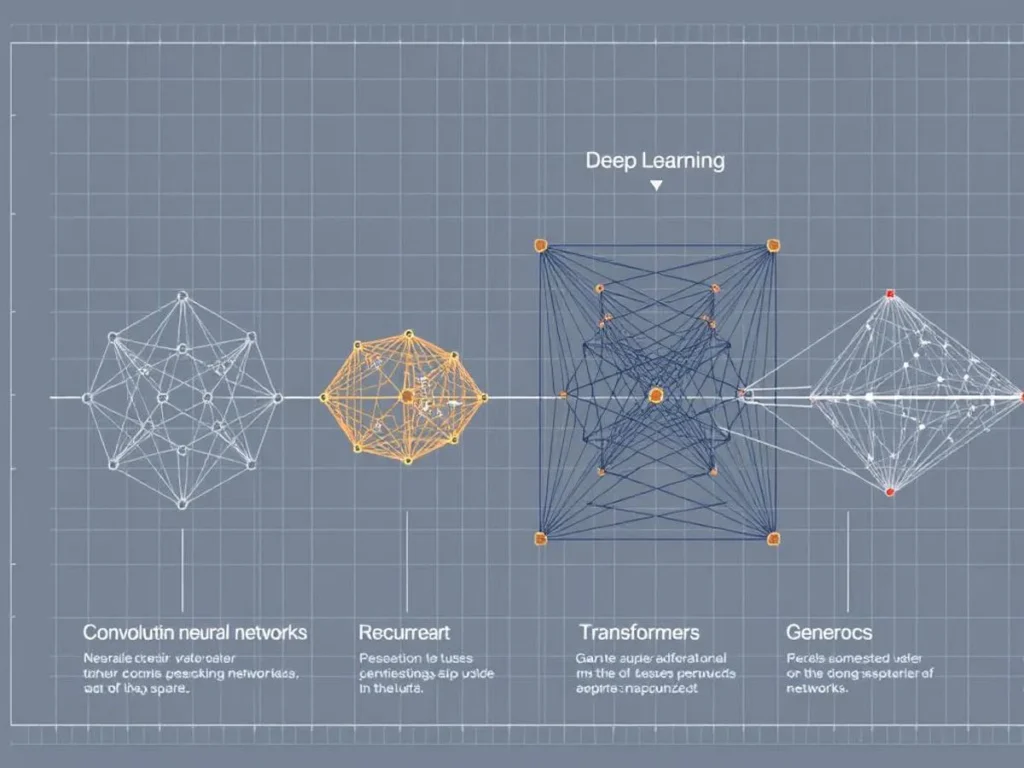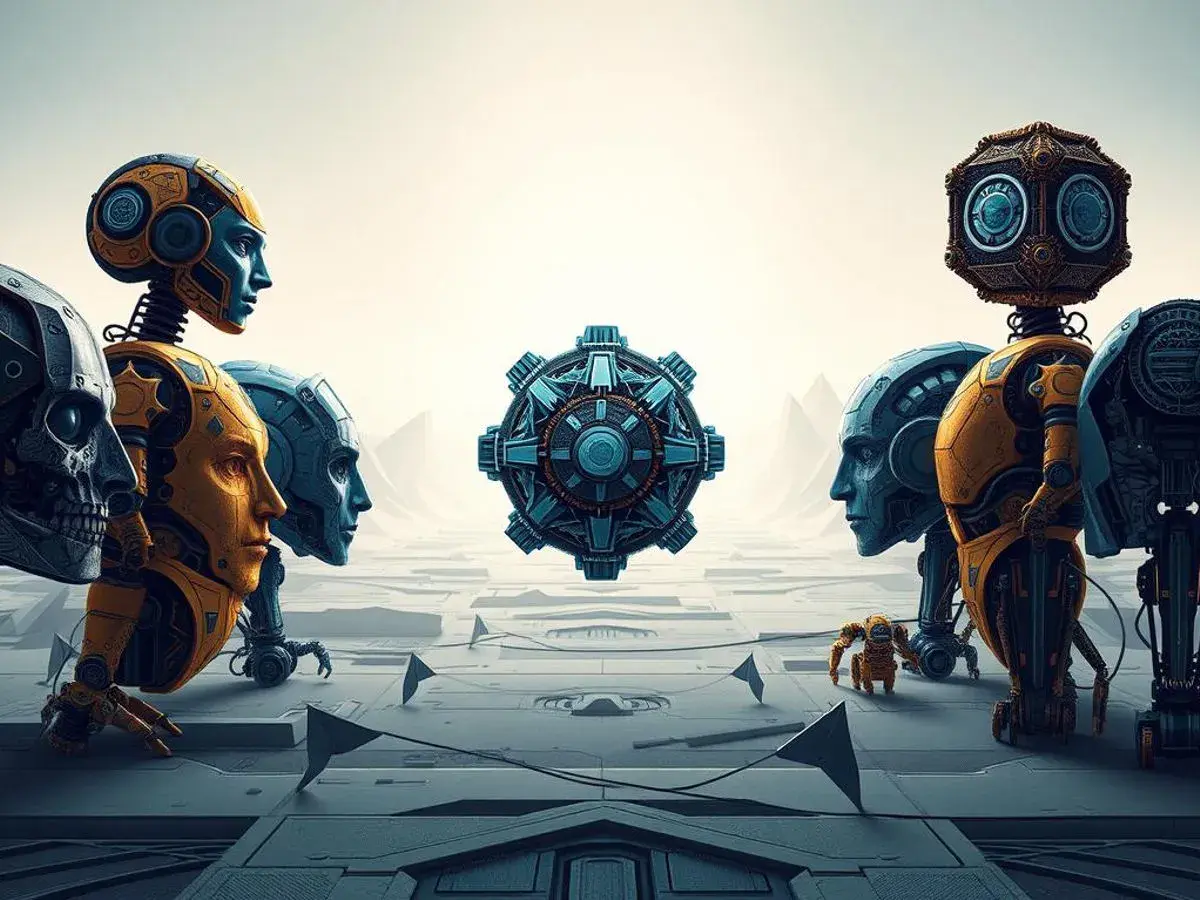Did you know that AI models will handle over 90% of digital interactions by 2030? This shows how important AI is in today’s tech world. It’s changing fields like healthcare and finance. Knowing the types of AI models is key.
In this article, we explore the seven main AI models. They power everything from chatbots to self-driving cars.

Key Takeaways
- Seven core AI models form the backbone of modern automation and decision-making systems.
- Each type solves unique challenges in data analysis and prediction, from supervised learning to generative models.
- These models are behind innovations like voice assistants, fraud detection, and medical diagnostics.
- Choosing the right model depends on specific project goals and available resources.
- Mastery of these types of AI models opens doors to leveraging AI effectively across personal and professional domains.
This guide helps you understand AI better. It’s useful for improving business workflows or exploring AI’s potential. Knowing these seven models gives you insights into how tech is changing our world.
Understanding AI Models and Their Growing Importance
Artificial intelligence (AI) is changing many fields, from healthcare to entertainment. At the heart of these changes are different types of artificial intelligence models. These models are like engines that use math and data to solve problems. They can recognize speech or predict trends.
What Exactly Is an AI Model?
An AI model is a set of rules or algorithms that learn from data. For example, a spam filter uses a model to spot unwanted emails. Some models predict things like the weather, while others create art or music. Each type is great for different tasks.
Why Understanding AI Models Matters in Today’s World
Knowing how AI models work is key for businesses and individuals. It helps them:
- Make smart choices about using AI
- Spot ethical issues in automated systems
- Improve workflows with custom solutions
Without this knowledge, companies might use tools like chatbots or predictive analytics wrongly. This can lead to big mistakes.
The Evolution of AI Models Through History
AI’s journey started with:
- 1950s: Rule-based “expert systems” that mimicked human knowledge
- 1980s: Machine learning came along, letting models learn from data
- 2010s: Deep learning made big strides in image and language processing
- Today: Advanced models like transformers are pushing the boundaries every day
This shows how different types of artificial intelligence models have grown. They’ve moved from strict rules to flexible learning systems.
The Fundamentals of Different Types of AI Models
To understand the types of AI models, we must first grasp their classification of AI models. This system groups models by their learning methods, goals, and data needs. Let’s explore the main categories that shape today’s AI solutions.
- Learning method (supervised, unsupervised, reinforcement)
- Purpose (prediction, clustering, generation)
- Data dependency (labeled vs. unlabeled inputs)
| Model Type | Learning Approach | Example Applications |
|---|---|---|
| Supervised Learning | Trained with labeled datasets | Image recognition, spam detection |
| Unsupervised Learning | Discovers patterns in unlabeled data | Customer segmentation, anomaly detection |
| Reinforcement Learning | Learns via rewards/punishments | Game AI, robotics navigation |
| Deep Learning | Uses multi-layer neural networks | Speech recognition, image synthesis |
| Generative Models | Creates new data resembling inputs | AI art, data augmentation |
By understanding this classification system, teams can pick the right types of AI models for their projects. This ensures that developers make informed choices for tasks like predictive analytics, automation, or creative tasks. The next sections will delve into each category, highlighting their impact in real-world applications.
Supervised Learning Models: The Backbone of Modern AI
Supervised learning is at the heart of many types of machine learning models today. It uses labeled datasets to learn and predict outcomes. This has led to big improvements in many fields. Let’s see how it drives innovation.
How Supervised Learning Works
Supervised learning starts with input-output pairs. It teaches models by adjusting parameters to reduce errors. The main parts are:
- Labeled datasets: Data with the right answers
- Loss functions: Ways to measure how accurate predictions are
- Optimization algorithms: Methods like gradient descent to improve the model
Popular Supervised Learning Algorithms
There are key algorithms that make these models versatile. Here’s a look at their uses:
| Algorithm | Use Case | Strengths |
|---|---|---|
| Linear Regression | Predict numerical values | Simplicity and ease of understanding |
| Logistic Regression | Binary classification | Good for yes/no answers |
| Random Forests | Complex pattern recognition | Great for finding complex relationships |
Real-World Applications of Supervised Learning
These models solve real problems every day. Here are some examples:
- Spam detection systems filtering emails
- Credit scoring systems assessing loan risks
- Medical tools diagnosing diseases from scans
From healthcare to finance, supervised learning is key to AI’s impact. It turns data into useful insights. This makes it essential in our tech-driven world.
Unsupervised Learning Models: Finding Patterns in the Unknown
Unsupervised learning is a key type of AI model that finds hidden patterns in data without labels. It’s different from supervised learning because it looks at raw data to find clusters, simplify, or find relationships on its own.
- Clustering: Algorithms like K-means, hierarchical clustering, and DBSCAN group similar data points (e.g., customer segmentation in retail).
- Dimensionality reduction: Techniques like PCA and t-SNE simplify high-dimensional data for visualization (e.g., analyzing genetic data).
- Association rule learning: Identifies item correlations, such as products frequently bought together in e-commerce.
Real-world examples of AI models in this category include fraud detection systems and social media platforms. For example, Netflix uses clustering to sort viewing habits without labels. These models are great when data doesn’t have clear labels, but they must match business goals.
It’s hard to check how well unsupervised models work since there’s no right answer. Teams use scores like silhouette scores or their knowledge to judge. Still, they’re key for tasks that need to explore raw data, where types of AI models must handle unstructured inputs.
Reinforcement Learning: Models That Learn Through Trial and Error
Reinforcement learning is a special type of machine learning model. It focuses on making decisions by trying things out. AI systems learn by getting rewards for good actions and penalties for bad ones. This method is great for changing situations because it adapts quickly.
Key Components of Reinforcement Learning
Reinforcement learning needs four main parts:
- Agent: The AI system making decisions
- Environment: The problem space where actions occur
- Rewards: Feedback signals shaping behavior
- States: Current conditions influencing choices
Types of Reinforcement Learning Algorithms
There are several key methods:
- Value-based methods (e.g., Q-learning) track optimal action values
- Policy-based methods like Proximal Policy Optimization (PPO) directly optimize decision-making strategies
- Model-based approaches predict future outcomes before acting
- Actor-critic methods combine strategy evaluation and optimization
Success Stories in Reinforcement Learning
| Application | Algorithm Used | Outcome |
|---|---|---|
| AlphaGo victory | Deep Q-Network (DQN) | Defeated top human players in 2016 |
| Google data centers | DeepMind’s RL systems | Cut cooling costs by 40% globally |
| Autonomous vehicles | Deep Reinforcement Learning | Waymo’s improved obstacle avoidance |
These stories show how reinforcement learning is making a difference. It’s helping in robotics, gaming, and more. As machine learning models get better, so will the things we can do with them.
Deep Learning Models: Mimicking the Human Brain
Deep learning models use layered neural networks to tackle complex tasks. They process data in nodes that are connected. These systems, known as types of deep learning models, mimic human decision-making with activation functions.
Each network has input, hidden, and output layers. The hidden layers help to abstract features from raw data.

Neural Networks Explained
Neural networks work like the brain, with connections between nodes. Layers process information one after another. Activation functions, like ReLU, add complexity.
Training these networks adjusts the weights to reduce errors in predictions.
Convolutional Neural Networks (CNNs)
CNNs are great for analyzing visual data. Their design includes:
- Convolutional layers to spot edges and patterns
- Pooling layers to shrink data size
- Full connectivity for making final predictions
Recurrent Neural Networks (RNNs)
RNNs handle sequences by keeping context in memory cells. Variants like LSTM and GRU solve the vanishing gradient problem. This makes them perfect for:
- Sentiment analysis
- Speech recognition
- Machine translation
Transformers: The Latest Revolution
Transformers changed the game with attention mechanisms. They focus on important data points. This makes them great for natural language processing and creating coherent outputs.
Models like BERT and GPT-4 use this architecture.
These types of deep learning models need a lot of computing power. But thanks to GPUs and TPUs, training is now possible. They’re used in everything from self-driving cars to medical diagnostics.
Generative Models: Creating New Content from Existing Data
Generative models are a key part of popular AI model types. They create new content by analyzing existing data. This can be text, images, or audio that looks like real-world stuff. They are used in both creative and practical areas, making them a big part of AI today.
Some important examples of AI models are:
- Generative Adversarial Networks (GANs): These networks work together, improving each other’s work through feedback.
- Variational Autoencoders (VAEs): They take data and make it smaller to create new versions of it.
- Diffusion models: They start with random noise and make it into something structured, step by step.
These tools help make things like GPT-4 for text, DALL-E for images, and music. Companies use them to make fake data, make design easier, and even create content just for you. But they also bring up big questions: Who owns AI-made stuff? How do we stop deepfakes or fake news?
We see generative AI as both good and bad. It helps us be creative, but we need to be careful. As these models get better, we must find a way to keep up with their power and use it wisely.
Types of AI Models Based on Functionality and Purpose
AI models can be grouped by their core functions. This helps businesses pick tools that meet their goals. The classification of AI models by purpose shows how they tackle real-world problems. Let’s look at four main categories:

Predictive Models
Predictive models forecast outcomes using historical data. Banks use them to assess loan risks. Retailers predict inventory needs. These models often use regression algorithms or deep learning networks to spot trends.
Classification Models
Classification models sort data into predefined categories. Spam filters and medical diagnostics rely on this. Techniques like decision trees or support vector machines (SVMs) help make accurate categorizations. This is crucial for automated decision-making.
Clustering Models
Clustering models group similar data points without labels. Businesses use these to segment customers or detect fraud. Algorithms like k-means or hierarchical clustering are used to find hidden structures in data.
Recommendation Models
Recommendation systems suggest personalized choices. For example, Netflix’s movie picks or Amazon’s product lists. These models combine collaborative filtering and neural networks. They analyze user behavior to boost engagement and sales.
How to Choose the Right AI Model for Your Project
Choosing the best AI model begins with knowing your data and goals. Let’s explore how to pick the right one from the types of AI models available.
Assessing Your Data and Problem Type
Start by looking at your data’s structure. If it’s labeled and organized, supervised learning like decision trees might be a good fit. For images or text, deep learning models like CNNs or transformers are better.
Next, figure out your problem. Is it about predicting something, like customer churn, or grouping data, like user behavior? Each problem type needs a different approach.
Considering Resource Constraints
Resources are key. Training big deep learning models takes a lot of power and time. If you’re short on expertise, start simple with models like logistic regression.
For small datasets, tools like scikit-learn are cost-effective. But for bigger tasks, cloud platforms like AWS SageMaker offer scalable solutions.
Evaluating Model Performance Metrics
Metrics show how well a model does. For classification, look at accuracy and F1 scores. Regression models are judged by RMSE or MAE.
But remember, your business goals are important, too. For example, a retail app might focus on keeping customers rather than just being accurate. Always test your models against real-world goals like user engagement or cost savings.
Align your project’s needs with the right tools. Start with clear goals, then narrow down the types of AI models based on your data, resources, and success criteria. This ensures your AI solution is effective and efficient.
The Future of AI Models: Emerging Trends and Innovations
As we look into the future of AI models, we see big changes. Now, AI can handle text, images, and sound all at once. This is thanks to models like OpenAI’s GPT-4 and Meta’s LLaMA2. They show how popular ai model types are getting better and more flexible.
- Multimodal models merge text, images, and sound for versatile applications.
- Foundation models scaling to handle diverse tasks with efficiency.
- Techniques like knowledge distillation reduce computational needs.
- Explainable AI ensures transparency in healthcare and finance.
- Federated learning enables secure data training without sharing sensitive information.

These trends will change many industries. Small businesses will get access to powerful tools. At the same time, ethical AI will address big social issues. The future of ai models is about finding a balance between new ideas and being responsible. We want these technologies to meet many needs without hurting privacy or fairness.
Common Challenges When Working with Different Types of Artificial Intelligence Models
Using different types of artificial intelligence models comes with its own set of problems. Teams struggle with everything from data issues to ethical concerns. These challenges need careful planning to overcome.
Data Quality and Quantity Issues
- Not enough training data can make models less accurate.
- Bad or biased data can lead to wrong predictions.
- Changes in data over time can make models less reliable.
Computational Resource Limitations
- Complex models like deep learning need expensive GPUs.
- Training big models can take a lot of time.
- Using transfer learning and model compression can help.
Ethical and Interpretability Concerns
- “Black box” models are hard to understand.
- Bias in systems can harm fairness.
- Privacy issues arise when models handle sensitive data.
| Challenge | Impact | Action |
|---|---|---|
| Data quality gaps | Reduced model performance | Data augmentation and audits |
| High computational costs | Slowed deployment timelines | Cloud-based solutions like AWS SageMaker |
| Uninterpretable models | Legal and trust issues | Adopt explainable AI frameworks |
To tackle these challenges, teams need to be proactive. Regular audits, scalable infrastructure, and ethical guidelines are key. They help ensure that different types of artificial intelligence models work well.
Conclusion
Looking into the seven main types of AI models shows how they drive new ideas in many fields. We see basic types of machine learning models like supervised and unsupervised learning. Then, there are advanced types of deep learning models like CNNs and transformers, each with its role.
These systems help with tasks like medical diagnosis and self-driving cars. They show how AI makes a difference in our lives.
Choosing the right AI model depends on what you want to achieve and what you have available. You must think about data quality and how much computing power you need. It’s also important to consider ethics to make sure the results are fair.
By picking the right model for the job, teams can avoid mistakes and find good solutions. This way, they can make the most of AI.
AI is always getting better, with new tools like generative models and systems that work with different types of data. Keeping up with these changes is key to using AI wisely. The future of AI depends on combining technical skills with practical problem-solving to create reliable and useful technologies.
Table of Contents
FAQ
What are the different types of AI models?
AI models include supervised, unsupervised, and reinforcement learning. Deep learning and generative models are also types. Each type analyzes data in its way.
Why is it important to understand AI models?
Knowing AI models is key because they change how we use technology. They help solve problems and make decisions. This knowledge is essential for using AI well.
Can you provide examples of popular AI models?
Popular AI models are neural networks like CNNs for images and RNNs for sequences. Generative Adversarial Networks (GANs) are also well-known for creating content.
How do supervised and unsupervised learning models differ?
Supervised learning uses labeled data for predictions. Unsupervised learning finds patterns in unlabeled data. It uncovers hidden data structures without categories.
What are some real-world applications of reinforcement learning models?
Reinforcement learning is used in game-playing AI like AlphaGo. It also helps in self-driving cars and optimizing data center operations for better energy use.
How do we choose the right AI model for our project?
To pick the right AI model, consider your data and problem needs. Look at resource limits and performance metrics. This ensures the model meets your project goals.
What challenges might we face when working with AI models?
Challenges include poor data quality, limited resources, and ethical issues. These must be addressed for successful AI use.
What types of machine learning models exist?
Machine learning models include supervised, unsupervised, reinforcement, and semi-supervised learning. Each is suited for different tasks and data types.
What is the significance of deep learning in AI model development?
Deep learning models, inspired by the brain, handle complex data. They’ve led to breakthroughs in vision, language, and audio recognition.
How are generative models changing the landscape of content creation?
Generative models, like GANs and VAEs, create realistic media. They’re changing content creation, sparking debates on ethics and ownership in AI.
Read other blog articles from HERE


This is really interesting, You’re a very skilled blogger. I’ve joined your feed and look forward to seeking more of your magnificent post. Also, I’ve shared your site in my social networks!
I like the efforts you have put in this, regards for all the great content.
I really like reading through a post that can make men and women think. Also, thank you for allowing me to comment!
Awesome! Its genuinely remarkable post, I have got much clear idea regarding from this post
Awesome! Its genuinely remarkable post, I have got much clear idea regarding from this post
Thanks for sharing this insightful article.
Looking forward to your next post!
It was a pleasure reading this.
Every sentence here adds value.
I appreciate the effort put into this post.